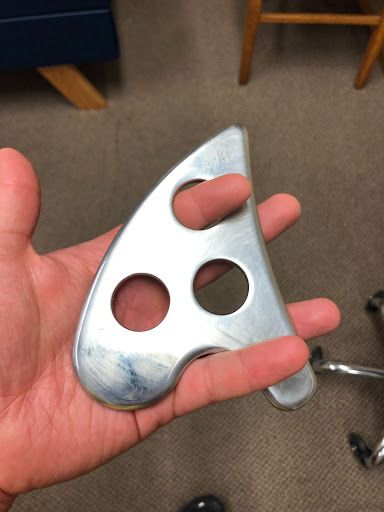
What You Need To Know About Chiropractic Tools And Equipment
Share
Chiropractic colleges typically have a great array of tools and equipment they allow students to try out while treating different patients. However, many times what schools offer is only a drop in the bucket of the potential tools on the market. Anymore, chiropractic schools do not accept donated tools/equipment from manufacturers. Because of this, students are not getting exposed to all of the possibilities out there. I strongly encourage new chiropractors to scour the web and look for different tools outside of what is offered within the walls of chiropractic school.
Here is a list of just a few common tools new chiropractors should seek out:
Soft Tissue Tools:

What is Instrument Assisted Soft Tissue Mobilization (IASTM)? IASTM in short is a method of scraping the skin to break up scar tissue in the soft tissues of concern. This process increases blood flow and then re-aggravates the area to stimulate the healing process again. This method can be used for scar tissue, muscle contractures, contusions, herniated discs, tendonitis, ligament sprains, increased range of motion (ROM) and also, of course, help with improved function and pain relief.
Graston owned the patent the soft tissue tools that were used to “scrape” the patients soft tissue. It’s a great product, but far overpriced for what it is. Now, a quick search shows many other brand names now that the Graston patent has expired. Examples are “Myofacial Releaser, FAKTR, Hawk Grips, Rocktape has its own line now, too. In short, they are a dime a dozen. I would recommend one tool that allows you to mobilize the majority of the body areas. Purchasing one tool instead of a kit keeps costs down and allows you time to really decide what other tools you may need in the future.

Vibrational/Percussive Soft Tissue Mobilization:
In the past few years a large number of different battery operated vibrational soft tissue tools hit the market. These tools look very similar to a jigsaw with a tennis ball instead of a blade. I joke about this and think I could have made one myself. However, on a serious note this has been a great addition to my personal chiropractic office. It is much faster and efficient to use a percussive instrument for 30-45 seconds on my chiropractic table before I perform a spinal alignment, rather than 15 minutes on electric stimulation. Efficiency is key in a busy practice. The following link is to the Theragun I personally use in my own practice.
Traction Devices:
There are a few options for traction of the lumbar spine, and I utilize both of them. One method, the decompression table as the picture shows, is

Anterior Assist Alpha:
Anterior Assist Alpha is the best chiropractic tool on the market for thoracic spinal adjustments and manipulation. I’m not just saying this because I designed the tool. I’m saying it because I felt a need to design the tool. There are other anterior thoracic manipulation tools on the market. The Guardian, Anteater, and Thoracic Manipulation Tool (TMT) for short.

I tried different tools. I started with Anteater. I saw that it protected my whole hand. However, It was very large, intimidating to all my patients, and very expensive. I then looked up the Guardian anterior adjusting tool. However, as their website shows, it doesn’t protect the hand from repetitive trauma of the adjustment. Thoracic manipulation tool is very similar to the Guardian in the way that the tool does not help protect the provider’s hand.
After reviewing the other options on the market for thoracic spine manipulation equipment and tools I knew I had to design a superior product. A tool that is appealing to the patient. A tool that is effective in offering a smooth comfortable adjustment at the same time of offering adequate protection to the provider. In short, it is functional and affordable. If you are interested in purchasing a tool yourself, or if you want to learn more about Anterior Assist Alpha, check out our website.
Cheers,
Dr. Redenius
